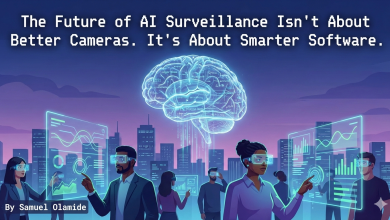
The 2008 recession, also known as the Great Recession, was a worldwide economic crisis that led to a loss of more than $2trillion from the global economy. The recession began after the 2007/2008 credit crunch and led to a prolonged period of low growth and rising unemployment.
As the primary reason for the Great Recession, the credit crunch described the situation where Banks worldwide became short of funds, therefore reducing the availability of loans. In the lead up to the recession, there was an increase in sub-prime lending from major US banks, i.e. higher risk mortgages where the banks charge a higher interest rate.
Interest in Artificial Intelligence (AI) has been on an exponential growth trajectory over the last few years, becoming one of the biggest ‘buzz words’ across all business sectors. Firms such as IBM and Google are heavily investing in the development of more sophisticated AI, such as IBM Watson, which can be used to help organisations predict future outcomes, automate complex processes and optimise employee time.
The global banking ecosystem is full of complex processes and dependencies, for which trying to incorporate AI could deem very challenging. On top of this, Banks are generating petabytes of data, soon to be zettabytes, from many internal and external sources such as contracts, emails, web portals etc.
Managing financial bank information today is archaic.
Ricardo Costa, CEO and Founder of LOQR said, “Over the years, banks have adapted their operation with the newest technology innovations to improve their customers’ experience. ATMs, card-based payments, and online banking were a few adaptations that helped traditional banks re-adjust and keep up with the latest tech trends. Now, we’re living in the AI-powered era, and it is crucial to understand how to use Artificial Intelligence (AI) technologies to empower the transformation of the banking sector.”
There are three key areas where AI could play a part in preventing another financial crash:
1) Risk Management
2) Know Your Customer (KYC)
3) Fraud Detection
Risk Management
Understanding the risk associated with money lending is crucial, which is why there’s a rigorous process to ensure the Bank can afford to lend the money and the beneficiary can afford to pay the money back with interest. From 1999, there was a drastic increase in sub-prime lending, meaning Banks were lending money at a higher risk, and borrowers owed more money than their homes were worth.
As a result, many regulations were set out, which created compliance burdens. Ensuring full compliance is a complex and tedious task; leveraging AI to automate these practices can provide better surveillance of banking data in real-time, enabling Banks to identify potential risks before they majorly affect the larger ecosystem.
Know Your Customer (KYC)
Inadequate evaluation of the risks of lending to customers contributed significantly to the financial crisis. Despite investing a lot of money in risk management operations, it is difficult to paint a complete picture of the customer.
However, with the use of AI, we can provide an extensive view by crawling through consistently updated public datasets for anything that may impact the customer’s creditworthiness. Through analysis of data across multiple data sources, both internal and external, we can build an enhanced picture of the customer to generate a more accurate risk score.
Data comes in three forms: Structured, Semi-Structured and Unstructured. Due to a lack of data about an applicant, lenders can find it difficult to understand whom they are lending to. Large organisations are still in the process of becoming more data literate, meaning the relevant data is currently situated in disparate systems and presents itself in different formats.
Sharing this data with the right people is not an easy task, and the various formats make interpretation difficult. AI can be used to solve this problem as it can read and analyse data despite the format, including unstructured data (e.g. text-based documents) to build a more accurate profile of the customer and their potential risk. Overall, this unlocks an entirely new dimension of customer understanding.
Fraud Detection
Utilising AI for advanced pattern recognition allows banks to analyse patterns in transaction data and spot heinous behaviour. These algorithms can identify violations of international standards, ensure compliance with trader neglect, or detect tax evasion on behalf of individuals or global companies.
It can also detect when a trader engages in illegal activity in real-time. This allows Banks to minimise their loss as they can stop it sooner rather than later.
According to SecForm, the average insider trader purchases are $1.2 billion per month. This is not an easy practice to detect manually without using some form of automation / AI. Capabilities include running real-time anomaly detection algorithms on individual trader data and scraping various social media platforms to ensure brokers aren’t breaking contractual agreements.
Conclusion
Despite the rapid development of Artificial Intelligence, there will always be hurdles to overcome in implementing a complex, enterprise-wide system. It takes a team of highly talented Data Scientists, Business Analysts, Data Engineers and Banking SMEs to build, test, implement and evaluate such algorithms. A test-driven approach should be emphasised throughout the lifecycle to minimise the false-negative rate (i.e. The system doesn’t flag a problem, when one exists).
As of February 2021, there are 9,311 FinTech start-ups (source: Statista). These organisations have positioned themselves to disrupt the market by utilising the latest Business Intelligence tools and emerging technology to view commercial and performance activity across all business areas, flagging anomalies and problems before they fully mature. If all organisations aim to


